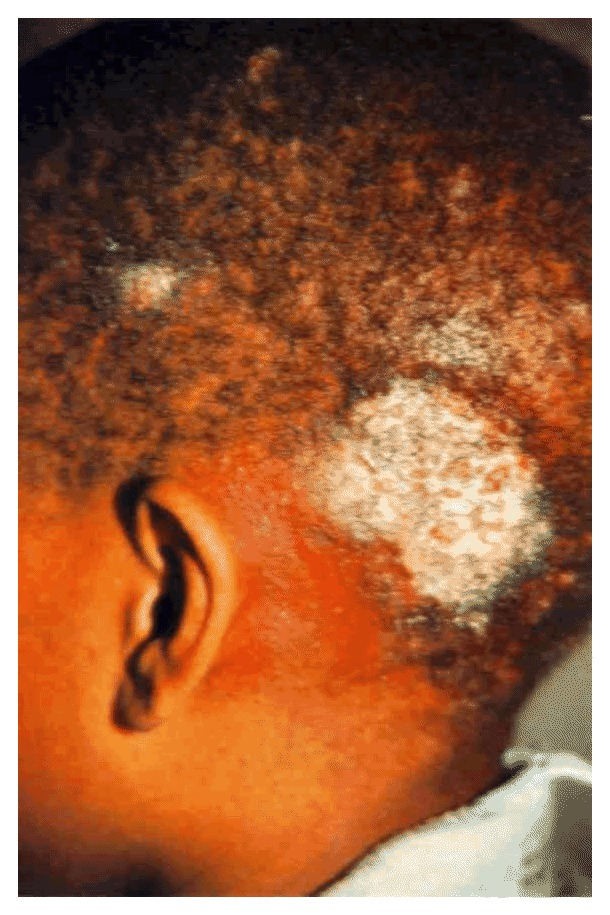Tinea capitis with kerion formation and adenopathy
This article highlights the case of tinea capitis in an 11-year-old with kerion formation and cervical adenopathy (disease or inflammation of the glandular tissue). The patient’s history revealed that he had had the infection for 3 years. A kerion is defined as a subtype of tinea capitis which causes significant inflammation and abscess formation on the scalp.
Tinea capitis or ringworm of the scalop is a fungal infection of the scalp and hair shafts. The signs and symptoms of ringworm of the scalp include itchy, scaly and bald patches on the scalp. Although the symptoms may vary for patients. The infection is highly contagious and is commonly seen in toddlers and school-aged children. Treatment options include anti-fungal medications taken by mouth and medicated shampoos to decrease the spread of infection. In some cases, ringworm of the scalp may lead to severe inflammation at the site of the infection, resulting in scarring and permanent loss of hair.
Other evident signs include one or more round patches of scaly skin which slowly expand or enlarge, scaly, grey or reddened areas, patches with small dots where the hair has broken off at the scalp, pain and brittle hair in the area affected.
What causes the ringworms?
The ringworms can be caused by mold-like fungi called dermatophytes which attack the outer layer of skin on the scalp and hair shaft. As the name suggests, ringworm is not caused by a worm. The name refers to the ring-like or circular appearance of the infection. It is very contagious and can be transmitted from human to human, object to human and animal to human.
Doctors treated the patient with a one-month course of griseofulvin and one month of ketoconazole therapy. The child had a partial response to it. After two months of oral griseofulvin and two weeks of tapering corticosteroid therapy, the patient showed complete resolution of the infection.
Source: NEJM




